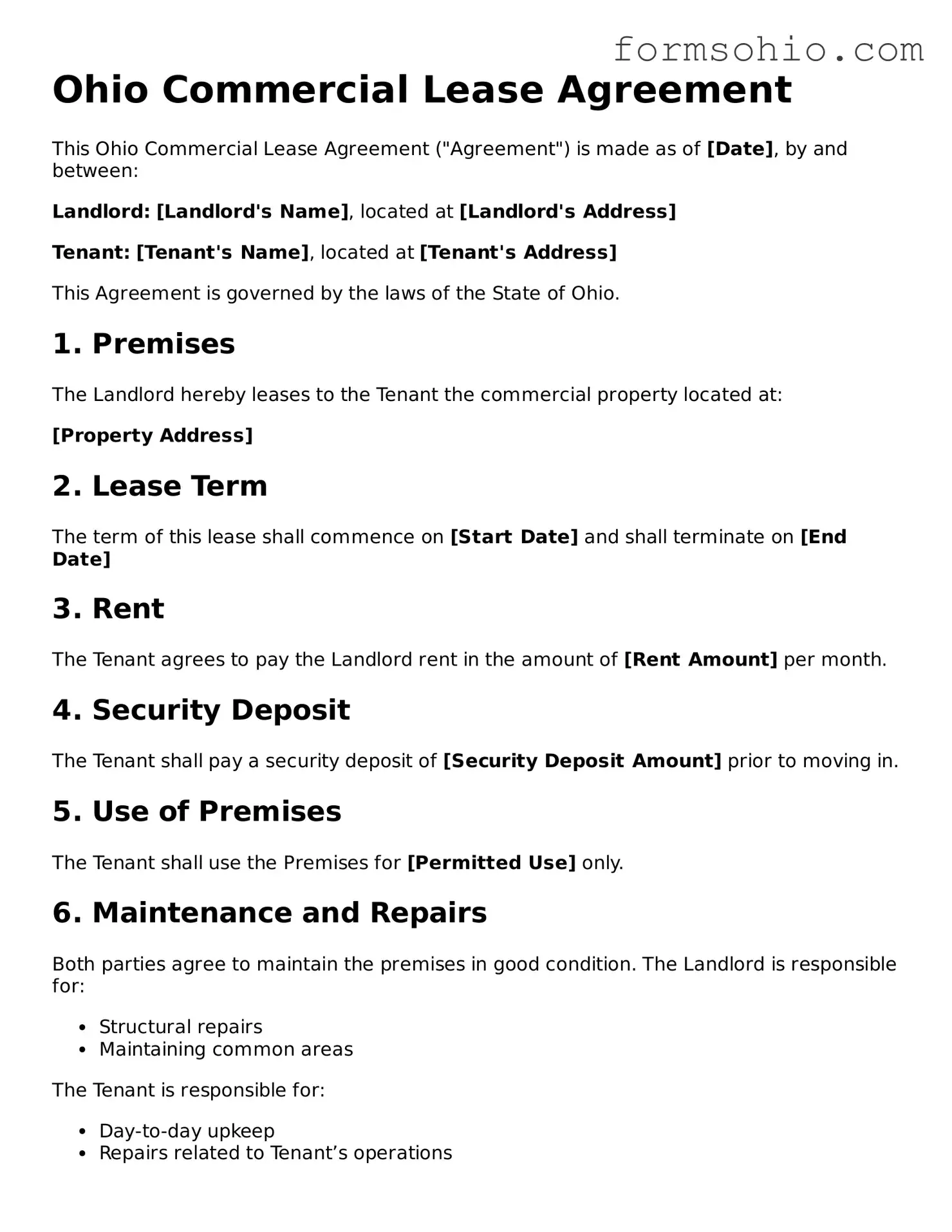Ohio Commercial Lease Agreement
This Ohio Commercial Lease Agreement ("Agreement") is made as of [Date], by and between:
Landlord: [Landlord's Name], located at [Landlord's Address]
Tenant: [Tenant's Name], located at [Tenant's Address]
This Agreement is governed by the laws of the State of Ohio.
1. Premises
The Landlord hereby leases to the Tenant the commercial property located at:
[Property Address]
2. Lease Term
The term of this lease shall commence on [Start Date] and shall terminate on [End Date]
3. Rent
The Tenant agrees to pay the Landlord rent in the amount of [Rent Amount] per month.
4. Security Deposit
The Tenant shall pay a security deposit of [Security Deposit Amount] prior to moving in.
5. Use of Premises
The Tenant shall use the Premises for [Permitted Use] only.
6. Maintenance and Repairs
Both parties agree to maintain the premises in good condition. The Landlord is responsible for:
- Structural repairs
- Maintaining common areas
The Tenant is responsible for:
- Day-to-day upkeep
- Repairs related to Tenant’s operations
7. Alterations
The Tenant may not make alterations without written consent from the Landlord.
8. Termination
Either party may terminate this Agreement with [Notice Period] written notice to the other party.
9. Governing Law
This Agreement shall be governed by laws of Ohio.
10. Signatures
By signing below, both parties agree to the terms of this lease:
Landlord Signature: ______________________ Date: _______________
Tenant Signature: ______________________ Date: _______________
